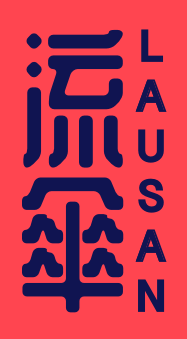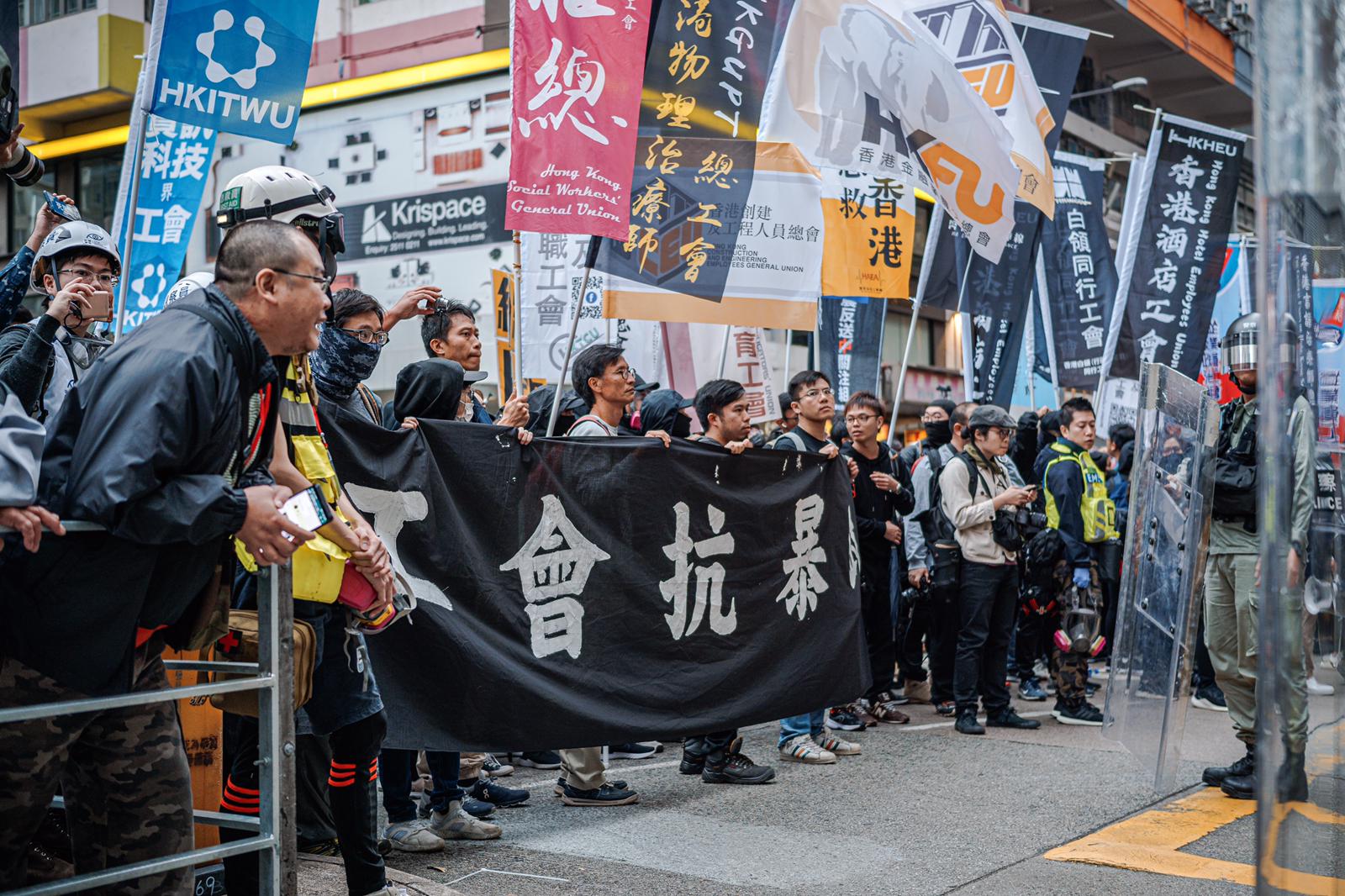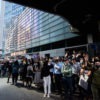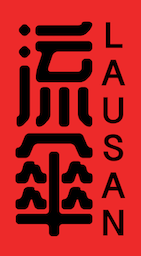Original:【導讀:在戰火中開拓的新工運】, published on Issuu by 工會脈搏 Unions Pulse
Translator: yehua
If you would like to be involved in our translation work, please get in touch here.
Editor’s note: Unions Pulse is a magazine created by a group connected to the Hong Kong protest movement hailing from various workplaces, schools and universities. Their goal is to build power and solidarity among comrades(同路人)from different sectors, to fight the deepening authoritarianism in the city via non-institutional means. This article is translated from the preface to Union Pulse‘s second issue.
It was perhaps the most distressing period in Hongkongers’ struggle for democracy. One year on from November 2019—the month of blood, tears, fear, and battle on the streets—we still cannot forget the night Alex Chow Tsz-lok fell to his death, how a cop shot a teenager in the chest in Sai Wan Ho, or the flames of siege and battle at the Chinese and Polytechnic Universities. Amidst this struggle, a fresh wave of unionisation emerged, seeking new ways to sustain the movement: not as a replacement of the resistance on the streets, but as a new propellant to take us through an impasse.
Decentralised organising as a mode of struggle
The anti-extradition law movement emphasised the decentralisation of decision-making. This allowed for a variety of possible actions to be organised independently across the city. On the flip side, it meant that attempts to coordinate a strike in the early stages of the movement lacked the subjectivity of workers.
While Telegram groups formed by workers from their respective industries and a petition for a general strike emerged at the end of July, they were not organised by professionals, workers or labour as such. As a result, the strike attempts in early August and September and “Dawn Action” simply made use of the strike as a form of action, rather than turn it into leverage against the state. At the same time, the battle on the streets had reached a bottleneck; it seemed destined for the movement to return to a state of disorientation and powerlessness.
The strike as a way of struggle was again considered, but this time something new is added to the equation—organising workers into unions. At the beginning of November, several industries started unionising, which led to the creation of more than 50 unions in a matter of months and the opening up of a new avenue of resistance: the union front.
Getting organised but preferring decentralisation is a complementary strategy. To “take down the big stage” (拆大台), in the context of Hong Kong’s movement, means decentralising the planning and direction of actions and resisting top-down decision. To decentralise may mean an aversion to formalising an organisation, but it does not do away with the nitty-gritty of getting organised. Unionisation provides one such path towards bottom-up organising to propel the movement forwards, by rallying political-aligned workers to take action that focuses on their identities as workers and the characteristics of their work.
The medics’ strike organised by the Hospital Authority Employees Alliance (HAEA) is a great example of how the union was able to bring together the pro-democracy employees of the Hospital Authority, hold participatory discussions on whether to organise a week-long industrial action and utilise their role as hospital workers to amass public support and pressure the government to close the border with Mainland China at the start of the pandemic. The strike showed how unions could be a conduit of our resistance, but it is the effective organising and mobilisation of the masses that made the action successful; forming platforms like unions itself only gets us so far.
A new labour movement that seeks more than worker rights
The increased importance of “going on strike” as a method of resistance in the movement gives additional meaning to workers who are engaged in struggle: they no longer strike just to protect their own interests or force concessions in labour disputes, but are taking action—and bullets—with their bodies out of a sense of moral obligation.
We need more than a union that fights for worker rights. What the times of revolution demand of are unions that take on the responsibility to mobilise the masses to resist a whole social order and fight for a future. This future is connected to all of our lives; equally, our struggle is inseverable from the future we hope to secure for our city.
Take HAEA’s strike as an example again. At the time (early February), the threat of a local outbreak of Covid-19 in Hong Kong was imminent, but the government refused to close the border with Mainland China, putting the community and medical workers at risk of contracting the disease. On the other hand, doctors and nurses were not given sufficient personal protective equipment, which undermined the medics’ and their patients’ safety. The strike was a response to the government’s poor handling of the Covid-19 crisis—in the medics’ own interests, as well as that of the city.
Transcending individual sectors, united in struggle
When a trade union concerns itself with more than just labour rights, it represents in the resistance not only workers from its sector, but society as a whole. To maximise the political fervour that the new labour movement can generate, it must not simply struggle for improved worker rights, but also rally and bring together different groups in society.
The National Security Law (NSL) is a case in point; its promulgation undermines the rights and integrity of workers in various sectors. For example, local tour guides introducing local culture and history to their travellers may encroach on the “red line”; the creative freedom of art and culture workers may be restricted because of political censorship; the freedom of speech in schools and institutional autonomy of universities are likewise affected.
The June 20 referendum—a campaign for a general strike to oppose the NSL—was borne out of the coordination between students and unions from various industries. Even though the campaign was unsuccessful, it still brought together different communities. It was not just about the freedom of political expression in a certain industry, but an attempt to facilitate base-building across different sectors and groups for the wider struggle. This is the kind of labour movement that transcends the limits of “sectors” and “worker rights”.
Embodying resistance in everyday life
The “new labour movement” may not immediately seem relevant to us, when in reality, it needs to become a core part of our lives as we try to sustain the movement. Because of this movement, we have started to avoid taking the MTR, boycott “blue” (pro-Beijing and pro-police) shops and restaurants, and watch our comrades’ YouTube channels instead of TVB (largely seen as state media.) The challenge is bringing this spirit to work. It’s hard to totally avoid working for a corporation that has Chinese funding or pro-establishment and pro-police co-workers. But we can organise politically-aligned colleagues in the workplace and take action against injustices at work with the same fervour with which we fight social injustices. Through this, we build a habit of embodying the resistance in our everyday lives and accumulate the energy that will refuel our movement in times of need.
One year of struggle: A timeline of the ‘unionisation wave’
June 12, 2019: Surrounding the Legislative Council to stall the second reading of the Extradition Bill
June 17: Renewed calls for a general strike (to stop work, classes and the markets) from civil society
July 26: Flight attendants organised a sit-in/occupation at the Hong Kong International Airport
August 1: Financial workers rally at Chater Garden
August 2: Civil servants and health workers both hold rallies
August 5: Strike actions and demonstrations across the city; total attendance around 350,000
End of August: The formation of a cross-sector general strike coordinating group
September 2 to 3: Strike and class boycott
Early November: The “new unionisation wave”
November 11: Strike and the “Dawn Action”
December 2: Across 1500 workers in the advertisement industry went on strike
December 8: Several unions ran stalls in the demonstration to encourage the formation of unions
December 11: Hospital Authority Employees Alliance held 1800-strong rally
December 15: Social welfare sector hold pre-strike rally
December 17 to 19: A three-day “warning strike” by social welfare sector workers
December 23 to 27: Musicians went on a five-day strike
December 20: Unions ran stalls in five districts to recruit members
January 1, 2020: Union stalls at the New Year March
February 3 to 7: More than 9000 public hospital workers went on strike to demand border closure
February 9: Aviation workers rally for border closure
February 19: The Union for New Civil Servants held a rally to protest the lack of PPE provided by the government
May 1: Several newly formed unions ran stalls across the city during the “May 1st Golden Week”
June 20: 30 unions and secondary school students coordinated a referendum campaign to oppose the National Security Law




